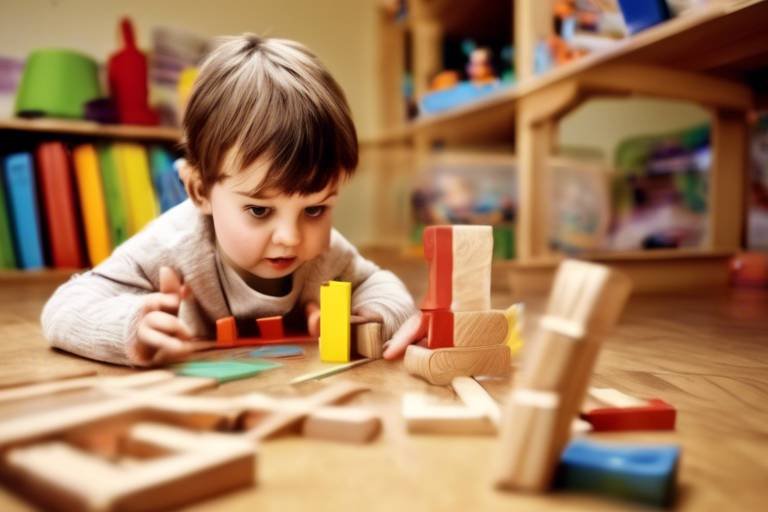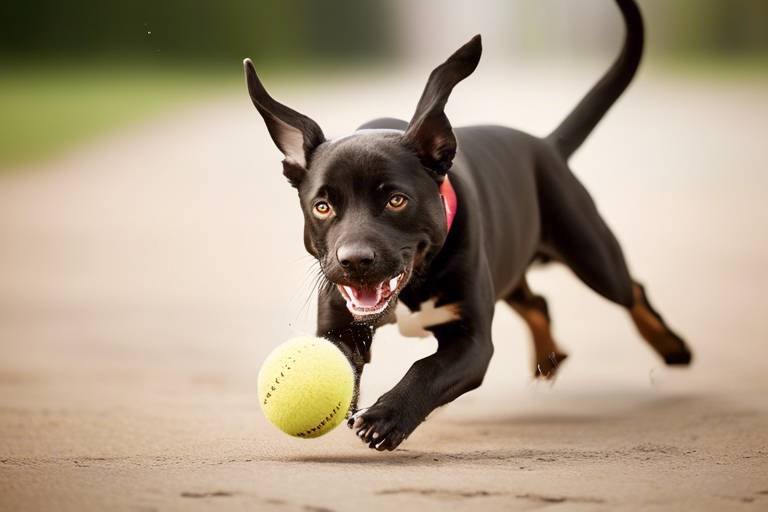How to Train Your Pet for Obstacle Courses
Training your pet for obstacle courses is not just about enhancing their physical abilities; it's also about building a deeper bond between you and your furry friend. Imagine the joy on your pet's face as they leap over a jump or weave through poles, all while you cheer them on! This article explores effective strategies for training your pet to navigate obstacle courses, enhancing their agility, confidence, and bond with you through fun and engaging exercises. Whether you have a high-energy dog or a curious cat, the principles of obstacle course training can apply to a variety of pets, making it an exciting journey for both of you.
Recognizing your pet's physical and mental capabilities is crucial for effective training. Just like humans, every pet has unique strengths and weaknesses. Tailoring the obstacle course to their strengths helps prevent frustration and builds confidence, ensuring a positive experience for both pet and owner. For example, if your dog is particularly agile, you might focus on jumps and tunnels, while a more cautious pet may benefit from simpler obstacles to start with. Observing your pet during playtime can provide insights into their natural abilities and preferences.
Selecting appropriate equipment is essential for a successful obstacle course. From jumps to tunnels, understanding the various types of equipment available can help create a safe and stimulating environment for your pet to train in. Here’s a quick breakdown of common types of equipment:
| Equipment | Purpose |
|---|---|
| Jumps | Enhance strength and coordination |
| Tunnels | Improve confidence and speed |
| Weave Poles | Develop agility and focus |
Exploring different types of obstacles, such as jumps, weave poles, and tunnels, allows you to create a diverse training routine. Each obstacle presents unique challenges that can enhance your pet's agility and focus. For instance, jumping obstacles are vital for developing your pet's strength and coordination. Learning the proper techniques for introducing jumps can help your pet overcome fears and improve their overall performance in agility training. If your pet is hesitant, start with lower jumps and gradually increase the height as they gain confidence.
Jumping obstacles are not only fun but also essential for your pet's physical development. When introducing these jumps, ensure that you:
- Start with low heights
- Use a soft landing surface
- Encourage your pet with treats and praise
By following these steps, you can help your pet feel secure and excited about jumping, making the training process enjoyable for both of you.
Tunnels and weave poles add excitement and complexity to your obstacle course. To teach your pet to navigate these elements, start slowly. For tunnels, encourage them to enter by using treats or toys. For weave poles, guide them through using your hand or a treat as a lure. This method not only enhances their agility skills but also keeps training enjoyable and engaging.
Ensuring safety during training is paramount. Understanding potential risks and implementing safety measures can help prevent injuries and create a positive training environment for your pet as they learn to tackle obstacles. Always inspect the equipment for stability and ensure the training area is free from hazards. Additionally, monitor your pet for signs of fatigue or discomfort, and never push them beyond their limits.
Creating a consistent training routine is essential for progress. Setting aside regular training sessions allows your pet to build skills incrementally, reinforcing their learning and keeping them motivated throughout the process. Consider scheduling training times that fit into your pet's natural energy levels; for example, training in the morning when they are fresh and eager to learn.
Short, focused training sessions are more effective than lengthy ones. Keeping sessions brief helps maintain your pet's attention and enthusiasm, allowing them to absorb new skills without becoming overwhelmed or fatigued. Aim for 10-15 minute sessions, gradually increasing the length as your pet becomes more comfortable with the obstacles.
Utilizing positive reinforcement techniques, such as treats or praise, encourages your pet to engage with the obstacle course. This approach fosters a positive association with training, motivating your pet to perform their best. Remember, the key is to celebrate small victories; even if your pet just approaches an obstacle, shower them with praise!
Regularly assessing your pet's progress is vital for effective training. Adjusting the difficulty of obstacles and techniques based on their development ensures they remain challenged while continuing to build their confidence and skills. Keep a training journal to track your pet's achievements and areas for improvement, making it easier to adjust your training approach as needed.
Q: How long does it take to train my pet for an obstacle course?
A: The time varies based on your pet's age, breed, and previous training. Consistent practice over weeks or months will yield the best results.
Q: Can I train my cat for obstacle courses?
A: Absolutely! Cats can also enjoy agility training. Use smaller, cat-friendly obstacles and be patient as they learn.
Q: What if my pet is afraid of certain obstacles?
A: Take it slow. Use positive reinforcement to encourage them and gradually introduce the obstacle at their comfort level.
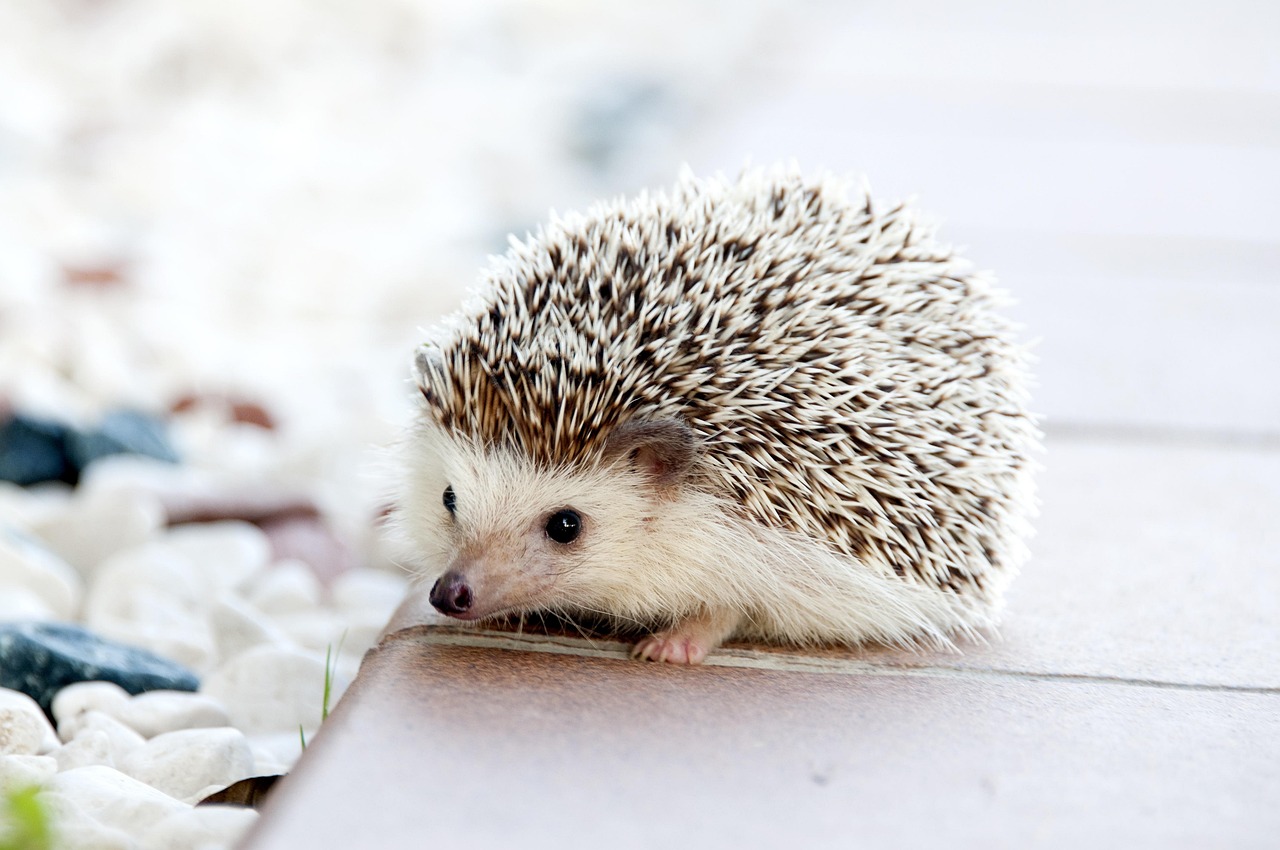
Understanding Your Pet's Abilities
When it comes to training your pet for obstacle courses, the first step is to understand their unique abilities. Every pet is different, and recognizing their physical and mental strengths is crucial for effective training. This understanding not only helps in tailoring the course to suit their capabilities but also plays a significant role in building their confidence. Imagine trying to climb a mountain without knowing your own strength; similarly, your pet needs to know what they can do to feel secure and motivated.
Start by observing your pet during playtime or casual activities. Do they have a natural inclination to jump? Are they agile and quick on their feet, or do they prefer to take their time? These observations can reveal a lot about their potential. For instance, if your dog loves to leap over sticks in the yard, they might enjoy jumping obstacles in an obstacle course. On the other hand, if your cat prefers to sneak around rather than leap, you might want to focus more on weaving and navigating through tunnels.
It's also essential to consider their age, breed, and health condition. Young pets are often more energetic and eager to learn, while older pets may need a gentler approach. Certain breeds are naturally more agile or have a higher drive for activity. For example:
| Breed | Natural Abilities | Training Considerations |
|---|---|---|
| Border Collie | High energy, excellent agility | Needs challenging obstacles |
| Bulldog | Strong but less agile | Focus on strength-based activities |
| Beagle | Curious and playful | Use scent-based challenges |
Additionally, assessing your pet's mental capabilities is just as important. Some pets may excel in understanding commands and following directions, while others may take a bit longer to grasp new concepts. Patience is key! Keep in mind that a frustrated pet is unlikely to perform well, so it's vital to create a training environment that encourages learning without overwhelming them.
In summary, understanding your pet's abilities involves a combination of observing their physical skills, considering their breed characteristics, and assessing their mental readiness. By doing so, you can create a personalized training approach that not only enhances their agility but also strengthens the bond between you and your furry friend. Remember, the goal is to make training a fun and rewarding experience for both of you!

Choosing the Right Equipment
When it comes to training your pet for obstacle courses, is absolutely essential. Think of it as setting the stage for a grand performance—if the stage isn’t right, the show won’t go on smoothly! The equipment you select not only affects your pet's ability to navigate the course effectively but also influences their overall enjoyment and safety. So, let’s dive into the world of agility gear and explore what you need to create an engaging and safe training environment for your furry friend.
First off, consider the types of obstacles you want to include in your course. Each piece of equipment serves a unique purpose and contributes to different aspects of your pet's agility training. Here are some common types of equipment that you might want to include:
- Jumps: These are crucial for developing your pet's strength and coordination. They come in various heights and styles, allowing you to customize the challenge based on your pet's abilities.
- Tunnels: A favorite among many pets, tunnels add an element of excitement and can help improve your pet's confidence as they learn to navigate through enclosed spaces.
- Weave Poles: These require your pet to focus and maneuver precisely, enhancing their agility and control.
- Contact Equipment: Items like A-frames and seesaws teach your pet to balance and build strength, which is fundamental for advanced agility.
Next, let’s talk about material and durability. It’s important to invest in high-quality equipment that can withstand the wear and tear of enthusiastic training sessions. Look for materials that are weather-resistant and easy to clean, especially if you plan to train outdoors. Additionally, safety should be your top priority; ensure that the equipment has rounded edges and is stable to prevent any accidents.
Another aspect to consider is the size of the equipment. Depending on your pet’s breed and size, you may need to adjust the dimensions of the obstacles. For instance, a small dog may struggle with equipment designed for larger breeds. Make sure to measure your pet and select equipment that fits their unique physical attributes.
Lastly, don’t forget about budget. While it can be tempting to go all out and purchase the most expensive gear, there are plenty of affordable options that still offer great quality. Consider starting with a few basic pieces and gradually expanding your collection as your pet becomes more skilled and confident. Remember, the goal is to make training fun and engaging, not overwhelming or financially burdensome!
In summary, choosing the right equipment is a vital step in preparing your pet for obstacle courses. By selecting appropriate obstacles, ensuring safety and durability, considering your pet's size, and sticking to your budget, you can create a stimulating environment that will enhance your pet’s agility training experience. Now, let’s get ready to jump into some exciting training sessions!
Types of Obstacles
When it comes to training your pet for obstacle courses, understanding the different types of obstacles available is key to creating an engaging and effective training regimen. Each type of obstacle serves a unique purpose, challenging your pet in various ways and enhancing their overall agility and focus. Whether you're just starting out or looking to spice up your training sessions, knowing the ins and outs of these obstacles will help you tailor the experience to your pet's needs.
Let’s dive into some of the most popular types of obstacles you can incorporate into your training routine:
- Jumps: These are essential for building strength and coordination. They can vary in height and width, allowing you to adjust the difficulty based on your pet's skill level.
- Tunnels: Tunnels offer a fun and exciting way for pets to learn how to navigate through enclosed spaces. They can be straight or curved, adding an element of surprise to your training.
- Weave Poles: These require your pet to maneuver between a series of poles, promoting agility and focus. Weave poles are great for enhancing your pet’s ability to change direction quickly.
- Ramps: Ramps help improve your pet’s balance and confidence as they learn to ascend and descend at varying angles.
- Contact Zones: These are areas on obstacles like seesaws or A-frames that require your pet to touch a specific part before proceeding, reinforcing control and precision.
By incorporating a variety of these obstacles into your training routine, you can create a dynamic and stimulating environment for your pet. Each obstacle not only presents a physical challenge but also engages your pet mentally, keeping them sharp and motivated. Think of it as a game of hide and seek, where your pet discovers new ways to conquer each challenge, building both confidence and skill along the way.
Moreover, you can customize the course based on your pet’s personality and preferences. For instance, if your furry friend is more adventurous, they might thrive on higher jumps and longer tunnels. On the other hand, a more cautious pet might benefit from lower jumps and wider spaces. The key is to observe your pet’s reactions and adjust the course accordingly, ensuring a fun and rewarding experience for both of you.
In conclusion, understanding the types of obstacles available is crucial for effective training. By mixing and matching different elements, you can keep the training fresh and exciting, fostering a deeper bond with your pet as you both navigate the ups and downs of the obstacle course together.
Here are some common questions pet owners have about training their pets for obstacle courses:
- What is the best age to start training my pet for obstacle courses?
Most pets can start training as young as six months old, but it’s essential to consider their physical development and readiness. - How long should training sessions last?
Short sessions of 10-15 minutes are often more effective than longer ones, keeping your pet engaged and preventing fatigue. - What if my pet is scared of certain obstacles?
Take it slow! Introduce new obstacles gradually, using treats and positive reinforcement to build their confidence. - Can all pets participate in obstacle training?
Most pets can participate, but always consult with your veterinarian to ensure your pet is physically capable of handling the activities.
Jumping Obstacles
Jumping obstacles are not just a fun addition to your pet's training regimen; they are essential for developing strength and coordination. When you think about it, jumping is like a mini workout for your furry friend. It engages multiple muscle groups and helps improve their overall fitness. However, introducing jumps to your pet requires a careful approach to ensure they build confidence rather than fear.
To begin, start with low jumps that are easy for your pet to clear. This helps them get accustomed to the motion without the risk of injury. As they become more comfortable, you can gradually increase the height of the jumps. Remember, every pet is unique, and their jumping capabilities will vary. Some might leap like a gazelle, while others may take a more cautious approach. It's crucial to tailor the training to fit your pet's individual needs.
Here are some key techniques to keep in mind when introducing jumping obstacles:
- Use Positive Reinforcement: Always reward your pet with treats or praise when they successfully clear a jump. This creates a positive association with the obstacle, encouraging them to try again.
- Maintain a Calm Environment: Ensure the training area is free from distractions. A calm environment helps your pet focus on the task at hand, making it easier for them to learn.
- Be Patient: If your pet seems hesitant or scared, don’t rush the process. Take a step back, and allow them to familiarize themselves with the jump before attempting it again.
As your pet becomes more adept at jumping, you can start introducing variations, such as different jump styles or spacing between jumps. This not only keeps the training exciting but also challenges them to adapt and improve their skills. Think of it as leveling up in a video game; each new challenge builds their confidence and ability.
Finally, always monitor your pet for signs of fatigue or discomfort. Just like us, pets can overexert themselves, leading to injuries. Incorporating rest periods into your training routine will ensure your pet remains healthy and enthusiastic about jumping. Remember, the goal is to make training a positive experience that strengthens your bond while keeping your pet physically fit.
Tunnels and Weave Poles
Introducing tunnels and weave poles into your pet's obstacle course is not just about adding variety; it's about creating a dynamic training environment that can significantly enhance their agility skills. Tunnels are fantastic for encouraging your pet to build confidence as they dash through them, while weave poles challenge their coordination and focus. Think of it as a fun game of hide and seek—where your pet gets to discover new skills hidden behind each obstacle!
When teaching your pet to navigate through tunnels, start by allowing them to explore the tunnel at their own pace. You might want to use treats or their favorite toy to entice them to enter. Once they’re comfortable, gradually increase the length of time they spend inside. This method not only builds their confidence but also strengthens the bond between you and your pet as they learn to trust you during training.
Weave poles, on the other hand, require a bit more precision. The key here is to break down the learning process into manageable steps. Begin by setting up just a few poles and guiding your pet through them using treats. As they master this, slowly increase the number of poles. Remember, patience is essential! If your pet seems frustrated, take a step back and simplify the task. The goal is to keep training fun and engaging.
To illustrate the benefits of incorporating tunnels and weave poles into your training routine, consider the following table:
| Obstacle | Benefits | Training Tips |
|---|---|---|
| Tunnels |
|
|
| Weave Poles |
|
|
Incorporating these elements into your training not only keeps your pet physically active but also mentally engaged. It’s like taking them on a mini-adventure every time you train! So, grab those tunnels and weave poles, and watch your pet soar to new heights in agility training!
Q: How do I know if my pet is ready for tunnels and weave poles?
A: Look for signs of comfort and curiosity. If your pet enjoys exploring new spaces and is eager to engage with you, they are likely ready to try these obstacles.
Q: What if my pet is scared of the tunnel?
A: Start by encouraging them to explore the tunnel at their own pace. Use treats and positive reinforcement to create a positive association with the tunnel.
Q: How can I keep my pet motivated during training?
A: Incorporate lots of praise, treats, and even playtime after successful runs through the obstacles. Keeping training sessions short and fun will also help maintain their enthusiasm.
Safety Considerations
When it comes to training your pet for obstacle courses, safety should be your top priority. Just like you wouldn’t dive into a pool without checking the water depth, it’s essential to assess the training environment before letting your furry friend take on those exciting challenges. Start by ensuring that the area is free of hazards such as sharp objects, uneven ground, or anything that could cause your pet to trip or fall. A safe space is the foundation of successful training.
Next, consider the size and age of your pet. Different breeds and ages have varying physical capabilities, and it’s crucial to tailor the course to their specific needs. For instance, a small dog may struggle with high jumps, while a larger breed might need more space to maneuver through tunnels. Always remember that what seems like a minor obstacle to you could be a significant challenge for your pet.
Additionally, keep an eye on the weather conditions. Training in extreme heat or cold can be tough on your pet. Make sure they stay hydrated and take breaks as needed. If the ground is wet or slippery, it’s best to postpone training to avoid any accidents. After all, nobody wants to see their best friend get injured while having fun!
Another important aspect of safety is monitoring your pet's health. Before starting any training program, especially one involving physical activity, a quick visit to the vet can ensure your pet is fit for the challenge. Regular check-ups will help you catch any potential issues early, allowing you to adjust training accordingly.
Lastly, consider using safety gear such as harnesses or padded collars, especially if your pet is prone to pulling or sudden movements. This added layer of protection can prevent injuries during training sessions. Remember, the goal is to create a fun and engaging atmosphere where your pet can thrive without fear of harm.
- What should I do if my pet is afraid of an obstacle? Start with low-pressure exposure, using treats and encouragement to build their confidence gradually.
- How often should I train my pet? Consistency is key! Aim for short sessions 3-5 times a week to keep your pet engaged without overwhelming them.
- Can older pets participate in obstacle training? Absolutely! Just be mindful of their physical limitations and adjust the course accordingly.
- What are some signs that my pet is tired or stressed? Look for signs like excessive panting, drooping ears, or lack of interest in the course. Always prioritize their comfort and well-being.
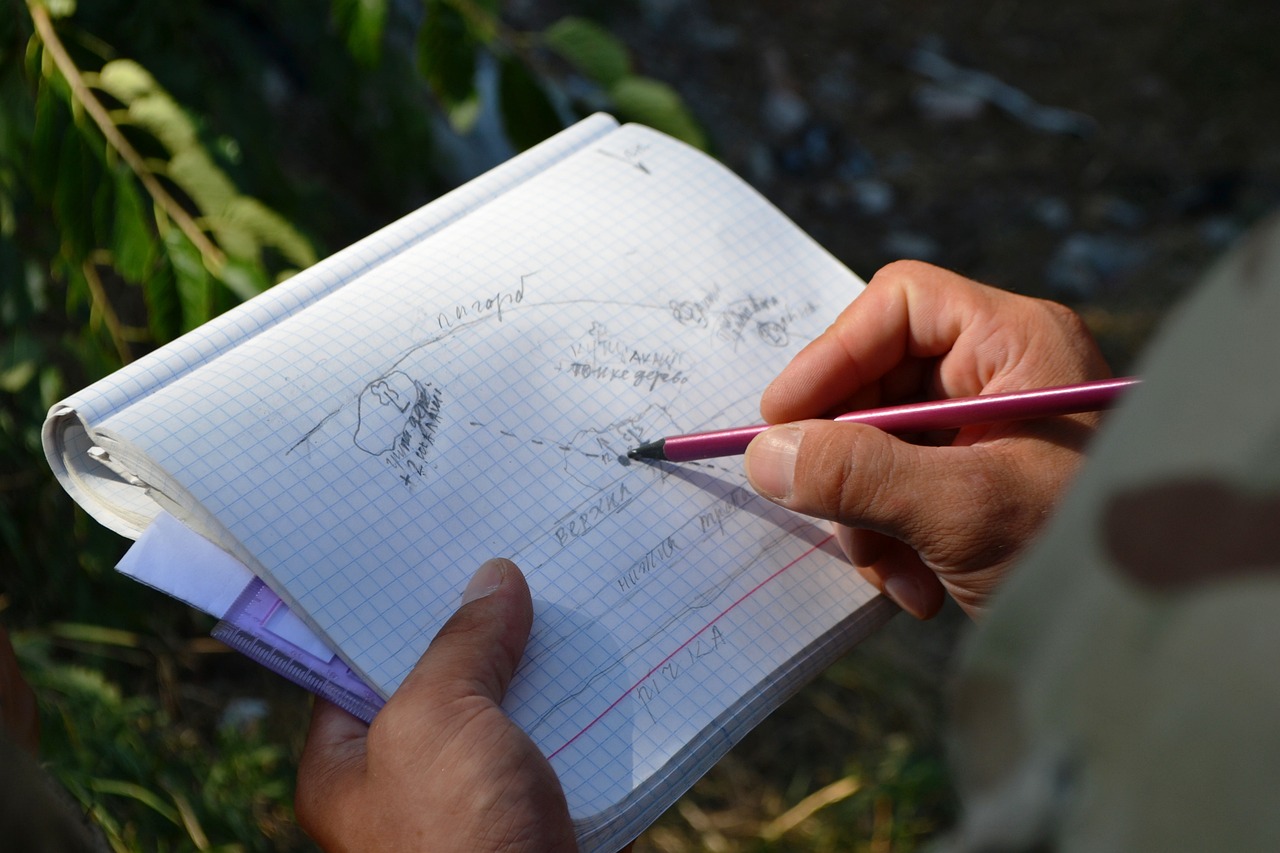
Establishing a Training Routine
Creating a consistent training routine is essential for progress when it comes to training your pet for obstacle courses. Think of it like building a house; without a solid foundation, everything else can fall apart. By setting aside regular training sessions, you allow your pet to build skills incrementally, reinforcing their learning and keeping them motivated throughout the process. Just like humans, pets thrive on routine, and knowing what to expect can help them feel more secure and engaged.
One of the key aspects of establishing a training routine is to make it enjoyable for both you and your furry friend. Consider scheduling training sessions at times when your pet is most energetic and focused. For instance, early in the morning or after a good play session might be ideal. This way, your pet will be more receptive to learning and less likely to become distracted. Remember, the goal is to have fun while training, so don’t forget to incorporate playtime and rewards!
When crafting your routine, it's important to keep in mind the duration and frequency of training sessions. Research suggests that short training sessions are more effective than lengthy ones. Keeping sessions brief—around 5 to 15 minutes—helps maintain your pet's attention and enthusiasm. This approach allows them to absorb new skills without becoming overwhelmed or fatigued. To help you visualize this, here’s a simple table outlining a potential weekly training schedule:
| Day | Activity | Duration |
|---|---|---|
| Monday | Jumping Obstacles | 10 minutes |
| Wednesday | Tunnels and Weave Poles | 15 minutes |
| Friday | Obstacle Course Run-through | 20 minutes |
| Saturday | Fun Playtime with Obstacles | 30 minutes |
Incorporating positive reinforcement techniques into your routine can also make a significant difference. Using treats or praise encourages your pet to engage with the obstacle course and fosters a positive association with training. Think of it as a game where both of you are winners! Every time your pet successfully navigates an obstacle, shower them with love and rewards. This not only motivates them to perform their best but also strengthens the bond you share.
Don't forget to keep an eye on your pet's progress. As they become more comfortable with the obstacles, you can gradually increase the difficulty. This ensures they remain challenged while continuing to build their confidence and skills. Remember, training should be a journey of discovery for both you and your pet, filled with laughter, learning, and lots of tail wags!
- How often should I train my pet? Aim for 3 to 4 times a week, with each session lasting between 5 to 20 minutes.
- What should I do if my pet seems frustrated? Take a break, simplify the task, and ensure that training remains a fun experience.
- Can older pets participate in obstacle training? Absolutely! Just be mindful of their physical limitations and adjust the course accordingly.
Short Training Sessions
When it comes to training your pet for obstacle courses, one of the most effective strategies is to keep your training sessions short and focused. Imagine trying to teach a child a new skill; if the lessons drag on too long, they lose interest and become overwhelmed. The same principle applies to our furry friends. By limiting training sessions to about 5 to 10 minutes, you can maintain your pet's attention and enthusiasm, making the learning experience both enjoyable and productive.
Short sessions also allow your pet to absorb new skills without feeling fatigued. Just like us, pets have varying attention spans, and pushing them too hard can lead to frustration or disinterest. Instead, consider breaking down the training into smaller, manageable chunks. For example, you might focus on one obstacle per session, such as jumps or tunnels, allowing your pet to master each element before moving on to the next. This approach not only builds confidence but also reinforces their learning.
Additionally, incorporating a variety of activities within these short sessions can keep your pet engaged. You could alternate between different obstacles or even integrate some fun games to keep things lively. Here are a few ideas:
- Mix it up: Combine jumps with a quick game of fetch to break the monotony.
- Use toys: Introduce their favorite toy as a reward for completing an obstacle.
- Incorporate commands: Teach them a new command before or after navigating an obstacle.
Remember, the goal is to create a positive training environment where your pet feels motivated to learn. By keeping sessions short and varied, you’ll not only enhance their skills but also strengthen the bond between you and your pet. And who knows? You might just discover that training is as much fun for you as it is for them!
Q: How often should I train my pet?
A: Aim for short training sessions 3 to 5 times a week. Consistency is key!
Q: What if my pet seems bored?
A: Change up the obstacles or introduce new games to keep things fresh and exciting.
Q: How can I tell if my pet is overwhelmed?
A: Watch for signs of fatigue or disinterest, such as lying down or losing focus. If you notice these signs, it’s time to wrap up the session.
Q: Is it okay to train in different locations?
A: Yes! Training in various environments can help your pet adapt to different distractions and improve their overall agility.
Positive Reinforcement Techniques
When it comes to training your pet for obstacle courses, positive reinforcement is your best friend. This method revolves around rewarding your furry companion for desired behaviors, making the training experience not just effective but also enjoyable. Imagine your pet navigating through a challenging course, and every time they successfully complete an obstacle, you shower them with praise or a tasty treat. This approach creates a strong bond between you and your pet while encouraging them to repeat the behavior in the future.
But what exactly does positive reinforcement look like in practice? It can range from verbal praise, like saying "Good job!" in an enthusiastic tone, to offering their favorite treats or even a fun play session afterward. The key is to reward your pet immediately after they perform the desired action, so they can make the connection between their behavior and the reward. This instant feedback is crucial for effective learning.
Here are some effective techniques to implement positive reinforcement during your training sessions:
- Use High-Value Treats: Choose treats that your pet absolutely loves. These could be small pieces of chicken, cheese, or special training treats. The more enticing the reward, the more motivated your pet will be!
- Vary the Rewards: Keep things exciting by mixing up your rewards. Sometimes use treats, other times offer playtime or a favorite toy. This variety keeps your pet engaged and eager to learn.
- Incorporate Praise: Never underestimate the power of your voice! A simple "You did it!" or "What a smart pup!" can make your pet feel like a superstar.
Additionally, timing is everything. If your pet successfully jumps over an obstacle, reward them right after they land. This immediate feedback helps them understand what behavior earned them the reward. If you wait too long, they might not associate the treat with the jump, and that could lead to confusion.
Another effective strategy is to use a clicker, which is a small device that makes a clicking sound. By clicking at the moment your pet performs the desired action and then giving them a treat, you create a clear signal that they did something right. This method is particularly useful for more complex tasks where timing can be a bit tricky.
Remember, the goal of positive reinforcement is to make training a fun and rewarding experience for both you and your pet. By focusing on what they do right and celebrating those victories, you’ll not only enhance their skills but also strengthen your relationship. After all, a happy pet is a motivated pet!
Q: How long should I train my pet each day?
A: Aim for short sessions of about 5 to 15 minutes. This keeps your pet engaged without overwhelming them.
Q: What if my pet doesn’t respond to treats?
A: Every pet is different! Try using their favorite toy or extra playtime as a reward instead.
Q: Can I use negative reinforcement?
A: It’s generally more effective to focus on positive reinforcement. Negative reinforcement can lead to fear and anxiety, which can hinder training.
Q: How do I know if my pet is ready for a more challenging obstacle?
A: If your pet is consistently completing the current obstacles with enthusiasm, it’s a good sign they’re ready to tackle something new!
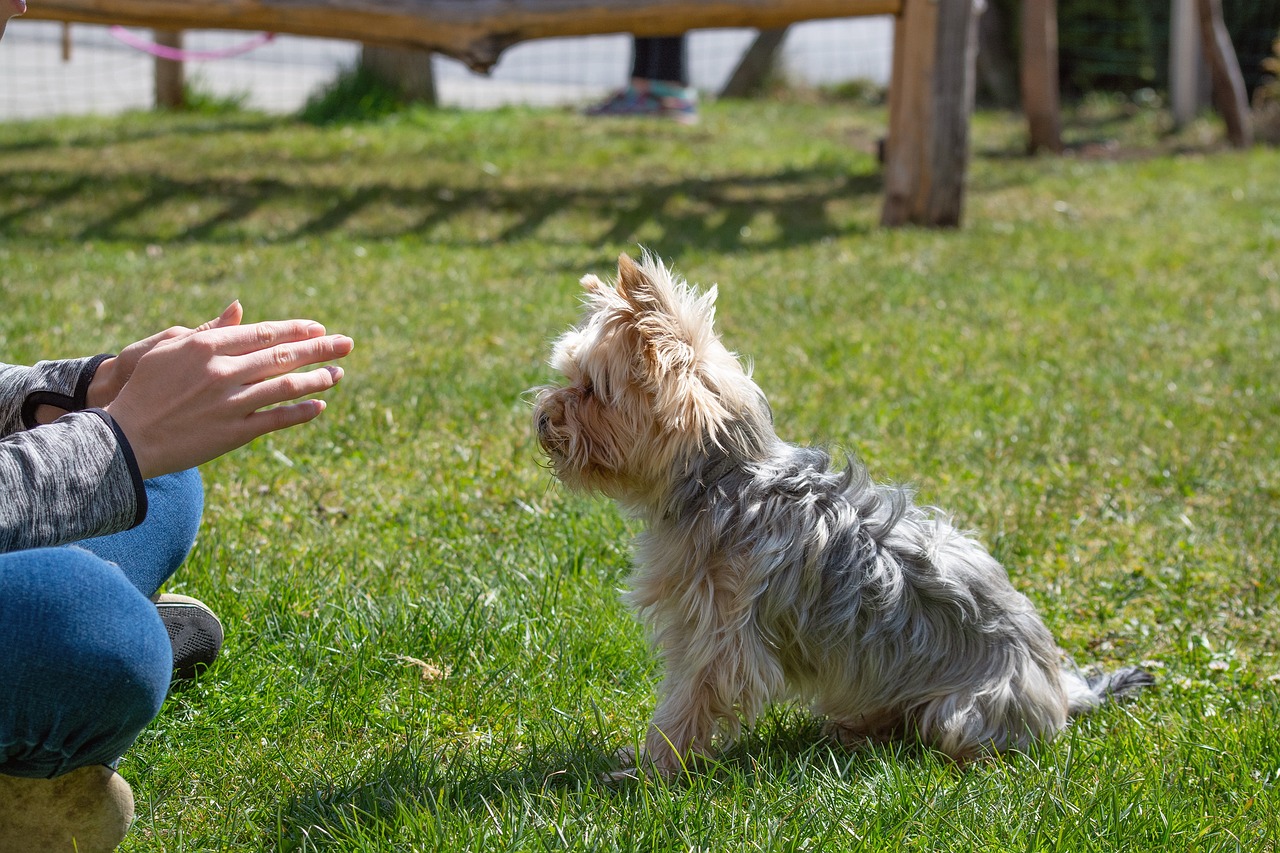
Monitoring Progress and Adjustments
Regularly assessing your pet's progress is vital for effective training. Just like how we humans need feedback to improve, our furry friends thrive on it too! Monitoring their performance allows you to identify what works and what doesn't, ensuring that the training remains engaging and beneficial. So, how do you keep track of their journey? Start by observing their reactions to different obstacles. Are they excited, hesitant, or overwhelmed? Each response is a clue to their comfort and skill level.
As you train, it's essential to adjust the difficulty of the obstacles. For instance, if your pet breezes through a jump, it might be time to increase the height or add a new challenge. On the other hand, if they struggle, consider simplifying the task or providing more encouragement. Remember, the goal is to build confidence and skills gradually. A well-balanced training routine keeps your pet motivated and eager to learn, just like a child who enjoys their lessons when they're appropriately challenging.
To help you track your pet's progress, consider maintaining a training journal. This journal can include:
- The types of obstacles practiced
- Your pet's performance level for each session
- Any adjustments made to the training routine
- Your observations on their mood and enthusiasm
Additionally, you can create a simple table to visualize their progress over time. Here’s an example:
| Date | Obstacle Type | Performance Level (1-5) | Notes |
|---|---|---|---|
| 2023-10-01 | Jump | 4 | Excited, but hesitant on landing. |
| 2023-10-05 | Tunnel | 5 | Ran through with enthusiasm! |
| 2023-10-10 | Weave Poles | 3 | Needed encouragement to complete. |
By keeping track of these details, you’ll not only see how far your pet has come, but you’ll also be able to tailor your training sessions to their evolving needs. Remember, consistency is key! Regular evaluations of their progress will help you create a stimulating environment that fosters growth, confidence, and a strong bond between you and your pet.
Q: How often should I train my pet?
A: It's best to have short, consistent training sessions several times a week. Aim for 10-15 minutes each session to keep your pet engaged.
Q: What if my pet seems disinterested?
A: If your pet loses interest, try changing the obstacles or incorporating more playtime. Keeping training fun is essential for maintaining their enthusiasm!
Q: How can I tell if my pet is progressing?
A: Look for improvements in their agility, confidence, and willingness to tackle new challenges. Keeping a training journal can help you track these changes.
Q: Is it normal for my pet to have off days?
A: Absolutely! Just like us, pets can have days when they’re not feeling their best. Be patient and adjust your training accordingly.
Frequently Asked Questions
- What is the best age to start training my pet for obstacle courses?
Generally, you can start training your pet for obstacle courses as early as six months old. However, it’s important to consider their physical development and maturity. Younger pets may benefit from basic obedience training first, while older pets can jump right into agility training!
- How do I choose the right equipment for my pet?
Choosing the right equipment depends on your pet's size, breed, and skill level. Look for adjustable jumps, soft tunnels, and lightweight weave poles. Always prioritize safety and ensure that the equipment is suitable for your pet's abilities to prevent injuries.
- Can all pets participate in obstacle course training?
While many pets can enjoy obstacle course training, it’s essential to consider their physical health and temperament. Dogs are the most common participants, but with proper training, cats and even small animals can get involved. Always consult with a vet if you're unsure about your pet's fitness for this activity.
- How long should each training session last?
Short training sessions, typically around 10 to 15 minutes, are ideal. This keeps your pet engaged without overwhelming them. You can have multiple sessions throughout the day to reinforce learning and maintain their enthusiasm!
- What kind of rewards should I use during training?
Using treats, praise, and playtime as rewards can motivate your pet effectively. Find out what excites your pet the most and incorporate that into your training. Positive reinforcement creates a fun learning environment and strengthens your bond!
- How can I ensure my pet stays safe during training?
To ensure safety, always supervise your pet during training and inspect equipment regularly for wear and tear. Start with low obstacles and gradually increase the difficulty as your pet gains confidence and skill. If your pet shows signs of fatigue or distress, take a break!
- What should I do if my pet is afraid of an obstacle?
If your pet is afraid, don’t force them. Instead, take a step back and use positive reinforcement to encourage them. Introduce the obstacle slowly, allowing them to explore it at their own pace. Patience and encouragement are key!
- How often should I train my pet?
Consistency is vital! Aim for at least two to three training sessions a week. This frequency helps reinforce skills while keeping your pet engaged and excited about learning. Remember, quality over quantity!
- Can I train multiple pets at the same time?
Training multiple pets can be a fun challenge! However, it’s best to train them separately or in small groups to ensure each pet receives individual attention and encouragement. This helps prevent distractions and allows for more focused training sessions.












